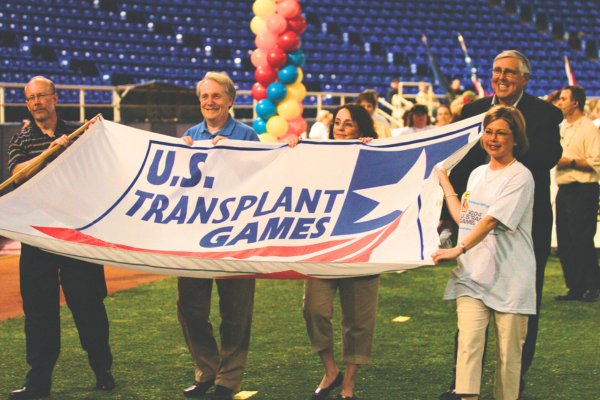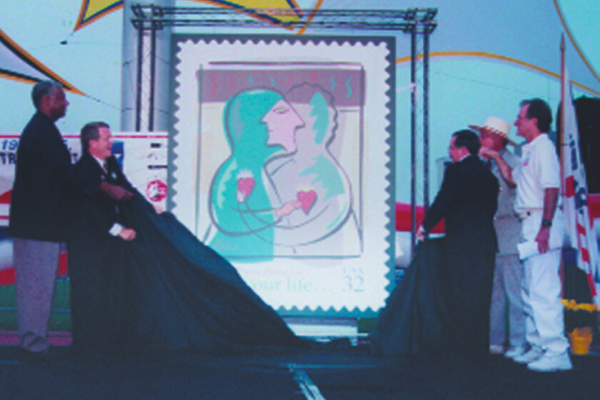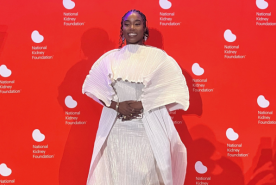June 05, 2025
The 1990s sparked major kidney care advances—from transplant games to donor rights. See how NKF led progress that still impacts patients today.
“How NKF Got Here" is a series highlighting NKF’s most significant achievements over the decades. Explore the full collection of articles here.
With the rise of the internet, cell phones, and personal computers, the 1990s were a time of major technological advances. This decade also brought some big changes to kidney care, with National Kidney Foundation (NKF) helping lead the way. Through groundbreaking research and new programs, the '90s set the stage for many of the advances we see today.
Let's dive into some of the key moments that helped shape the world of kidney care.
Kidney Disease and Transplant Milestones in the 1990s
1990: NKF took over leadership of the U.S. Transplant Games, an Olympic-style competition for people with an organ transplant. The first Games led by NKF brought together more than 1,200 athletes and 5,000 living donors, donor families, and supporters. By NKF's final Games in 2010, the event had grown to about 1,500 competitors and 7,000 attendees.

- 1990: NKF's fundraising for research hit a huge milestone—raising over $2 million in a single year for the first time.
- 1992: NKF launched the very first Spring Clinical Meetings (SCM). SCM is NKF’s premier educational event that shares innovation, research, and best clinical practice with kidney health professionals worldwide. What started as a small gathering has become a primary learning event for kidney professionals with over 3,000 attendees annually.
Help us unravel the silent threat and rewrite the future of kidney health.
- Equip patients and families with knowledge, resources, and access to high-quality care.
- Advocate for policies that address disparities and prioritize kidney health for all.
- Fund research and technology to advance early detection, improve treatment, and expand transplant access.
- 1992: NKF created the National Donor Family Council and the Bill of Rights for Donor Families. The Bill of Rights explains that donor families deserve respect, clear information, emotional support, and privacy. Their loved one's gift should be honored, and families have the right to know about the recipient’s general health outcome and participate in memorial events.
- 1992: NKF led the first National Donor Family Recognition Ceremony and Workshops, sponsored by the U.S. Department of Health and Human Services, to honor families who donated their deceased loved ones' organs.
- 1995: NKF started the Kidney Disease Outcomes Quality Initiative (KDOQI®) to create national guidelines that help doctors provide consistent and quality care for people with kidney disease. These guidelines are continually updated and are still in use today.
- 1995: NKF unveiled the National Donor Family Quilt, a tribute made of patches created by the families of deceased organ donors.
Subscribe today!
Join the NKF Blog Newsletter
Get inspirational stories and kidney disease resources delivered to your inbox every month. You'll gain practical insights and expert advice to help you better understand and manage your kidney health, no matter where you are on your kidney journey.
- 1995: NKF helped pass the Organ Donor Leave Act. This allows federal workers to take an additional 30 days of paid leave after donating a kidney. This law inspired many states to create similar programs for their employees. Today, NKF is fighting for the Living Donor Protection Act to continue this legacy.
- 1997: NKF got congressional support to study the effects of over-the-counter pain medications on the kidneys. NKF also worked with Congress to study the cost of lifetime Medicare coverage for kidney transplant patients' anti-rejection medications.
- 1997: NKF launched the Kidney Early Evaluation Program (KEEP® Healthy) to help people get diagnosed with kidney disease in its earliest—and most treatable—stages.
- 1998: NKF gets support from Congress to study proteinuria, or protein in the urine. The goal was to understand how it affects kidney health and how doctors can find and treat it early. Early detection can help slow down or even stop kidney disease.
- 1997: NKF's yearly research fundraising crossed the $3 million mark.
- 1998: The U.S. The Postal Service revealed a special Organ and Tissue Donation stamp at the U.S. Transplant Games to celebrate and raise awareness about organ donation.

- 1999: The first-ever altruistic or non-directed living kidney donation took place, meaning a person donated a kidney to a stranger in need.


















